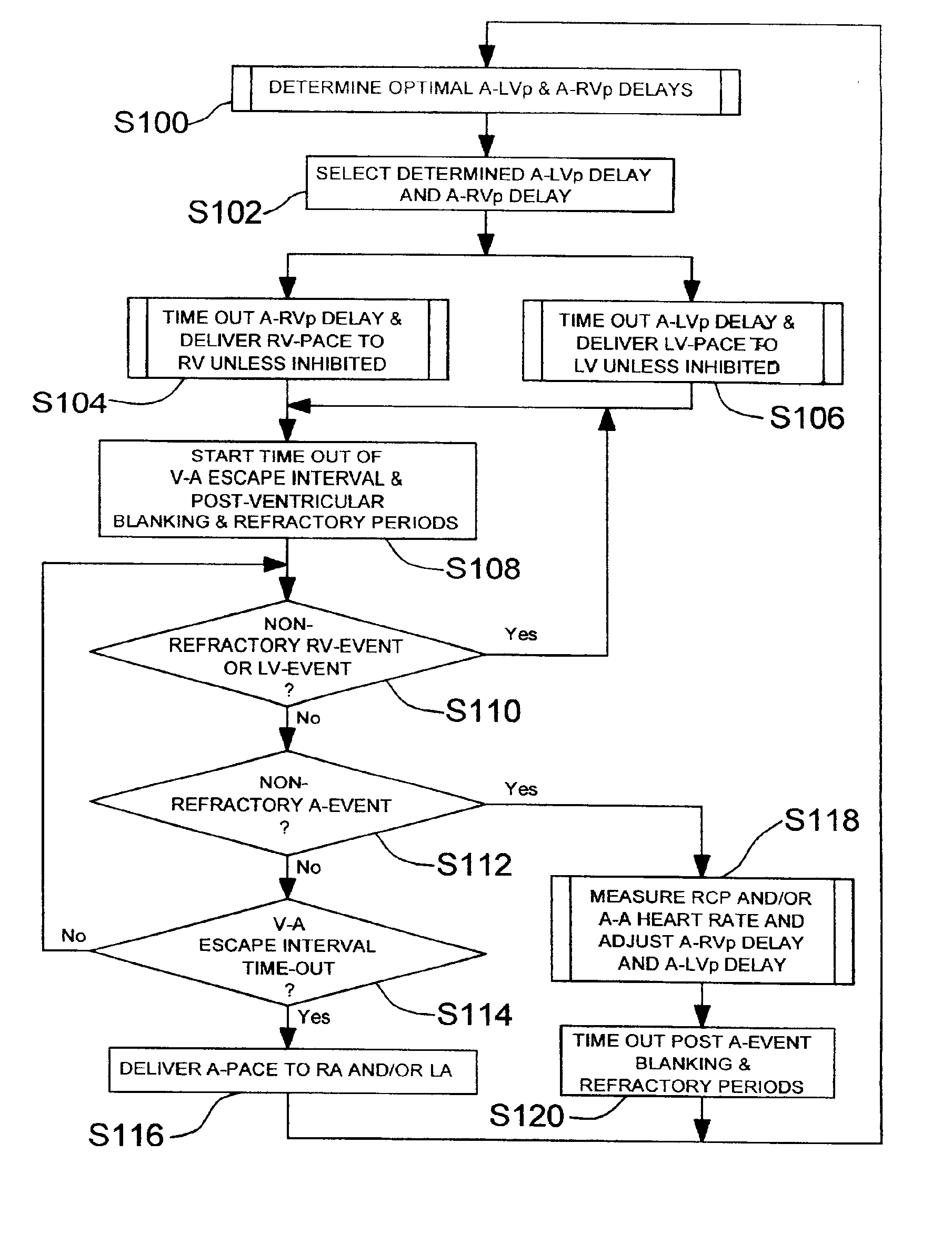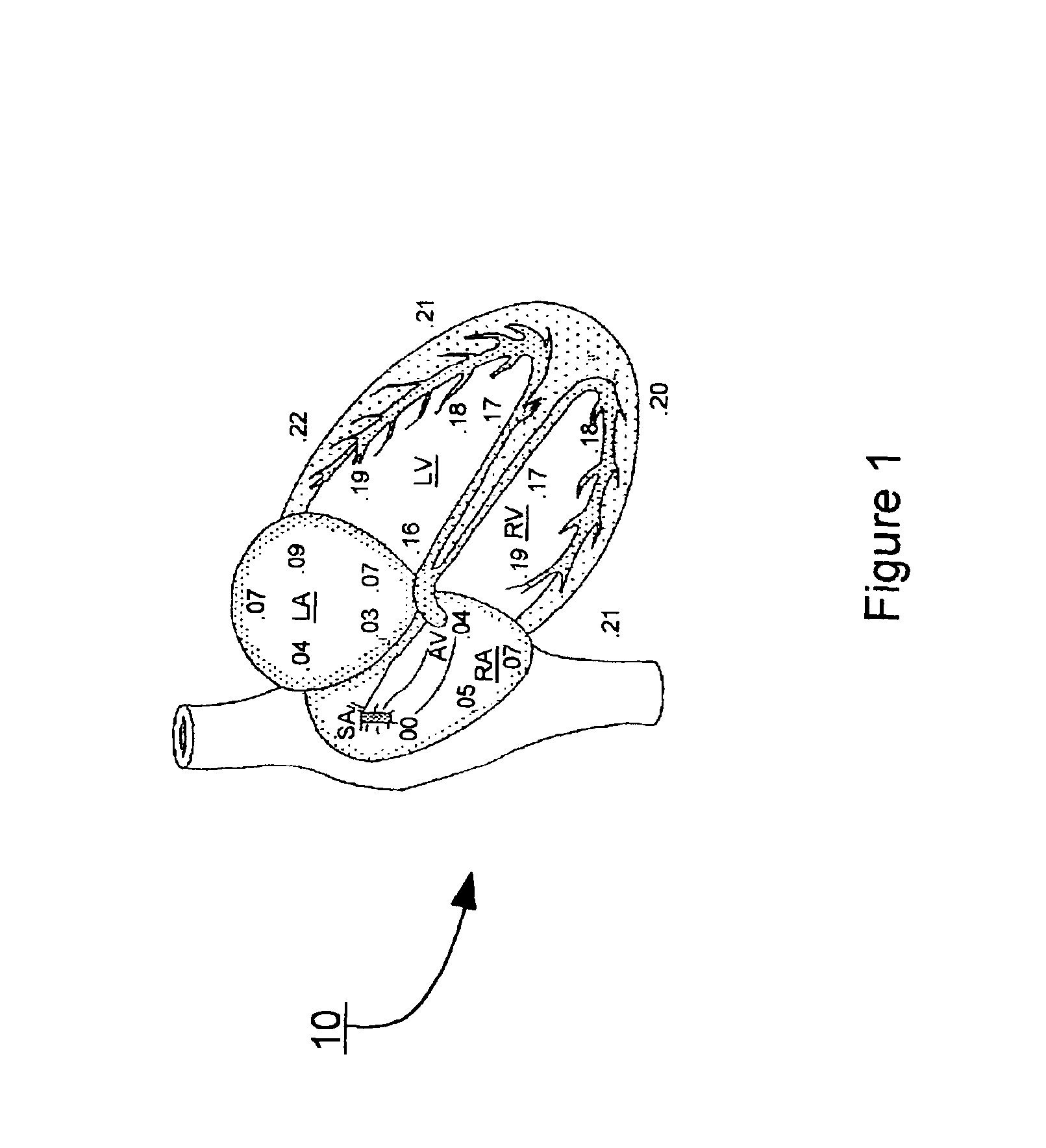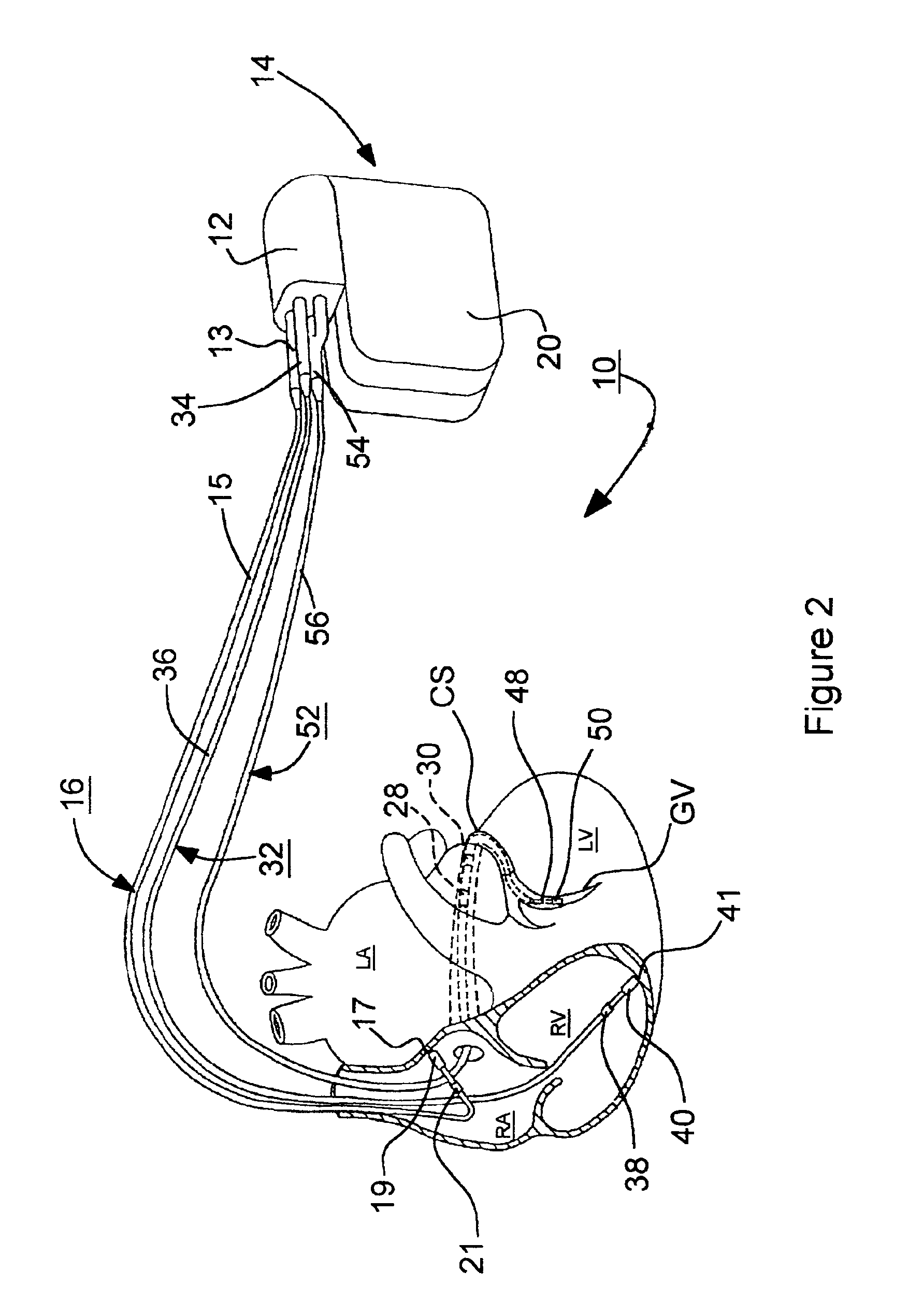System and method for bi-ventricular fusion pacing
a bi-ventricular and fusion technology, applied in the field of bi-ventricular cardiac fusion pacing systems, can solve the problems of pulmonary congestion and dyspnea, impeded venous return from the pulmonary vasculature, and increased susceptibility to atrial arrhythmias, and achieve enhanced cardiac output and enhanced cardiac output.
- Summary
- Abstract
- Description
- Claims
- Application Information
AI Technical Summary
Benefits of technology
Problems solved by technology
Method used
Image
Examples
Embodiment Construction
In the following detailed description, references are made to illustrative embodiments for carrying out the invention. It is understood that other embodiments may be utilized without departing from the scope of the invention. For example, the invention is disclosed in detail in FIGS. 2 and 3 in the context of an AV sequential, bi-ventricular, pacing system operating in demand, atrial tracking, and triggered pacing modes in accordance with FIGS. 4 through 7 for restoring synchrony in depolarizations and contraction of the LV and RV in synchronization with atrial paced and / or atrial sensed events. This embodiment of the invention is programmable to operate as a three chamber pacing system having an AV synchronous operating mode for restoring upper and lower heart chamber synchronization and right and left atrial and / or ventricular chamber depolarization synchrony. The system can comprise the capabilities of one of the DDD / DDDR and VDD / DDR bi-ventricular pacing systems but preferably o...
PUM
 Login to View More
Login to View More Abstract
Description
Claims
Application Information
 Login to View More
Login to View More - R&D
- Intellectual Property
- Life Sciences
- Materials
- Tech Scout
- Unparalleled Data Quality
- Higher Quality Content
- 60% Fewer Hallucinations
Browse by: Latest US Patents, China's latest patents, Technical Efficacy Thesaurus, Application Domain, Technology Topic, Popular Technical Reports.
© 2025 PatSnap. All rights reserved.Legal|Privacy policy|Modern Slavery Act Transparency Statement|Sitemap|About US| Contact US: help@patsnap.com



